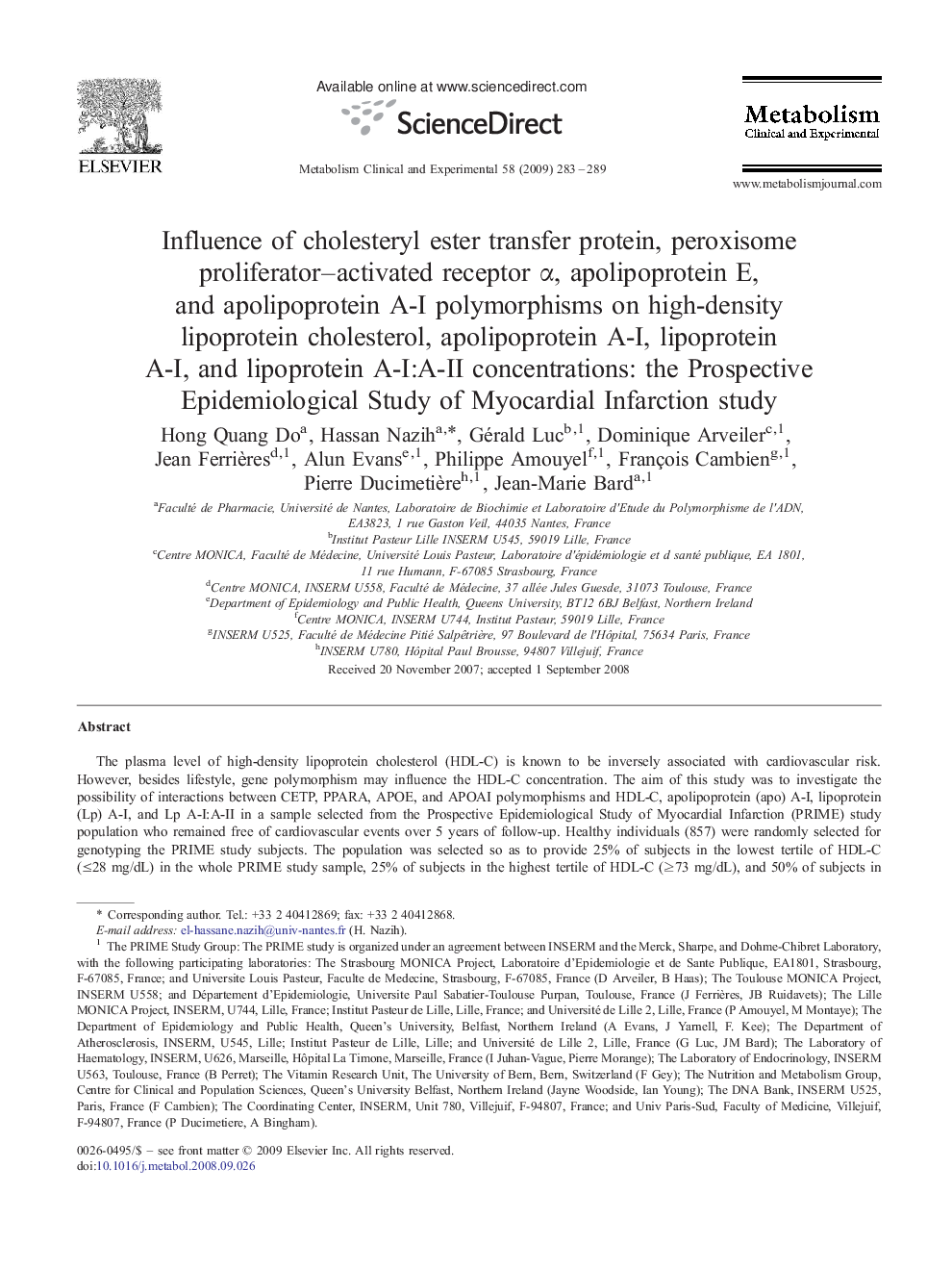| Article ID | Journal | Published Year | Pages | File Type |
|---|---|---|---|---|
| 2807347 | Metabolism | 2009 | 7 Pages |
Abstract
The plasma level of high-density lipoprotein cholesterol (HDL-C) is known to be inversely associated with cardiovascular risk. However, besides lifestyle, gene polymorphism may influence the HDL-C concentration. The aim of this study was to investigate the possibility of interactions between CETP, PPARA, APOE, and APOAI polymorphisms and HDL-C, apolipoprotein (apo) A-I, lipoprotein (Lp) A-I, and Lp A-I:A-II in a sample selected from the Prospective Epidemiological Study of Myocardial Infarction (PRIME) study population who remained free of cardiovascular events over 5 years of follow-up. Healthy individuals (857) were randomly selected for genotyping the PRIME study subjects. The population was selected so as to provide 25% of subjects in the lowest tertile of HDL-C (â¤28 mg/dL) in the whole PRIME study sample, 25% of subjects in the highest tertile of HDL-C (â¥73 mg/dL), and 50% of subjects in the medium tertile of HDL-C (28-73 mg/dL). Genotyping was performed by using a polymerase chain reaction system with predeveloped TaqMan allelic discrimination assay. The CETP A373P rare allele c was less frequent in the group of subjects with high HDL-C, apo A-I, Lp A-I, and Lp A-I:A-II concentrations. Apolipoprotein A-I and Lp A-I were also found to be higher in the presence of the É2 allele coding for APOE. The effect of the CETP A373P rare allele c on HDL-C was independent of all tested parameters except triglycerides. The respective effect of these polymorphisms and triglycerides on cardiovascular risk should be evaluated prospectively.
Related Topics
Life Sciences
Biochemistry, Genetics and Molecular Biology
Endocrinology
Authors
Hong Quang Do, Hassan Nazih, Gérald Luc, Dominique Arveiler, Jean Ferrières, Alun Evans, Philippe Amouyel, François Cambien, Pierre Ducimetière, Jean-Marie Bard,
